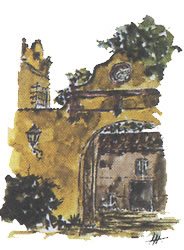LAMA2-related muscular dystrophy – LAMA2 gene
LAMA2-related muscular dystrophy, also known as merosin-deficient muscular dystrophy or deficiency of laminin alpha 2, is a condition that causes weakness and atrophy of skeletal muscles. This alteration can occur in the form of an early onset, more pronounced, or as a form of late onset, a milder form.
The early onset form, also called congenital muscular dystrophy type 1A (DMC1A), becomes evident at birth or in the first months of life. This disease is considered part of a class of muscle disorders called congenital muscular dystrophies. Affected children have severe muscle weakness, hypotonia, poor spontaneous movement and contractures. Weakness of the muscles of the face and throat can cause feeding difficulties and, consequently, growth delay. Hypotonia also affects the respiratory muscles, which can lead to frequent and potentially fatal lung infections. Usually, as affected children grow, they develop deviations of the spine such as scoliosis or lordosis. In general, children with this form of the disease do not learn to walk without help. Difficulties in speech ability may be due to weakness of facial muscles and tongue, but intellectual ability is usually normal. Occasionally, heart problems and seizures may occur. Due to the serious health problems that occur in this form of the disease, many affected individuals do not survive beyond adolescence.
The late onset form is presented later in childhood, or even in adulthood. The signs and symptoms of this form of the disease are milder than in the type of early onset, and are similar to those of a group of muscle disorders classified as bone ring muscular dystrophies. In late onset LAMA2-related muscular dystrophy, the most affected muscles are the proximal muscles, specifically the muscles of the shoulders, arms, pelvic area and thighs. Children with this form of the disease have delayed development of motor skills, such as walking, but generally manage to do so without help. Over time, they can develop back stiffness, joint contractures, scoliosis and respiratory difficulties. However, the most affected individuals retain the ability to walk and climb stairs, and life expectancy is not affected.
As the name implies, this disease is due to mutations in the LAMA2 gene (laminin subunit alpha 2), located on the long arm of chromosome 6 (6q22.33). This gene encodes a subunit of the family of proteins called laminins, consisting of three different subunits (alpha, beta, and gamma). The LAMA2 gene encodes the alpha-2 subunit, present in laminin 2 protein, also known as merosin, and also part of another protein called laminin 4. Laminin 2 and laminin 4 play an important role in skeletal muscles. These proteins bind to other proteins in the extracellular matrix and in the membrane of muscle cells, helping to maintain the stability of muscle fibers.
More than 100 mutations in the LAMA2 gene have been identified in individuals with LAMA2-related muscular dystrophy. Most of the mutations of the LAMA2 gene that cause the severe and early onset form cause the absence of functional laminin of the alpha-2 subunit. Mutations that give rise to the mildest and late onset form usually cause a functional laminin deficiency of the alpha-2 subunit. This deficiency or absence results in a lack of laminin 2 and laminin 4, which reduces the resistance and stability of muscle tissue and results in the signs and symptoms of LAMA2-related muscular dystrophy.
This disease is inherited with an autosomal recessive pattern, that is, both copies of the gene in each cell must have mutations for the alteration to be expressed. The parents of an individual with an autosomal recessive disease have a copy of the mutated gene, but usually do not show signs and symptoms of the disease.
Tests performed in IVAMI: in IVAMI we perform the detection of mutations associated with dementia with Lewy bodies, by means of the complete PCR amplification of the exons of the LAMA2 gene, and their subsequent sequencing.
Recommended samples non-coagulated blood obtained with EDTA for separation of blood leukocytes, or a card with a dried blood sample (IVAMI can mail the card to deposit the blood sample).



